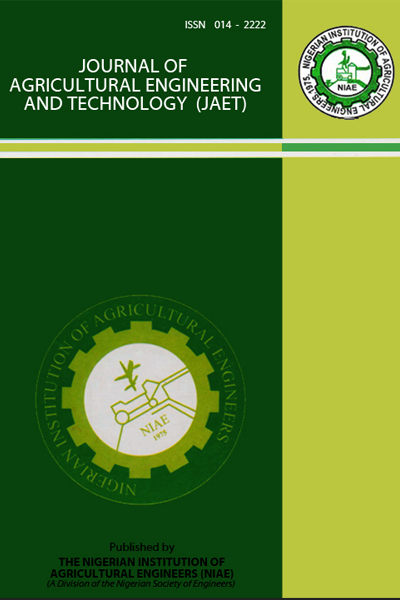GUIDELINES, PROCESSES, OPERATIONAL TECHNIQUES AND FACTORS TO CONSIDER IN MECHANIZED AGRICULTURAL BUSH CLEARING IN NIGERIA
Keywords:
Bush clearing, agriculture, mechanization, soilAbstract
Bush clearing for any purpose causes environmental degradation when improperly done. To reduce this
effect, there are guidelines to be followed. This paper presents the guidelines, processes operational
techniques and factors to be considered in mechanized agricultural bush clearing in the tropics.
The author relied on literature, interaction with farmers and machinery operators and his experience as
field officer in National Agricultural Land Development Authority of Nigeria (NALDA) to develop a
system for mechanized agricultural bush clearing in the tropics. Some of the recommendations are that the
site should have a slope and stoniness of less than 5% and 20% respectively, depth to compact layer and
bedrock should be greater than 40 cm and 75 cm respectively, a band of between 5 m – 10 m of
vegetation must be left along both sides of rivers and streams where they exist, and where a bulldozer is
used for windrowing, a maximum depth of 80 mm and a maximum lateral movement of 1 m of the soil
are allowed. Areas that are poorly drained with sandy gravel and silty clay loam should not be cleared
mechanically.
In all cases, mechanized agricultural bush clearing must be properly planned and executed. Also, the
operation should be supervised by experts who must include soil scientists and agricultural engineers.
This is to ensure that the operators adhere strictly to the guidelines.


